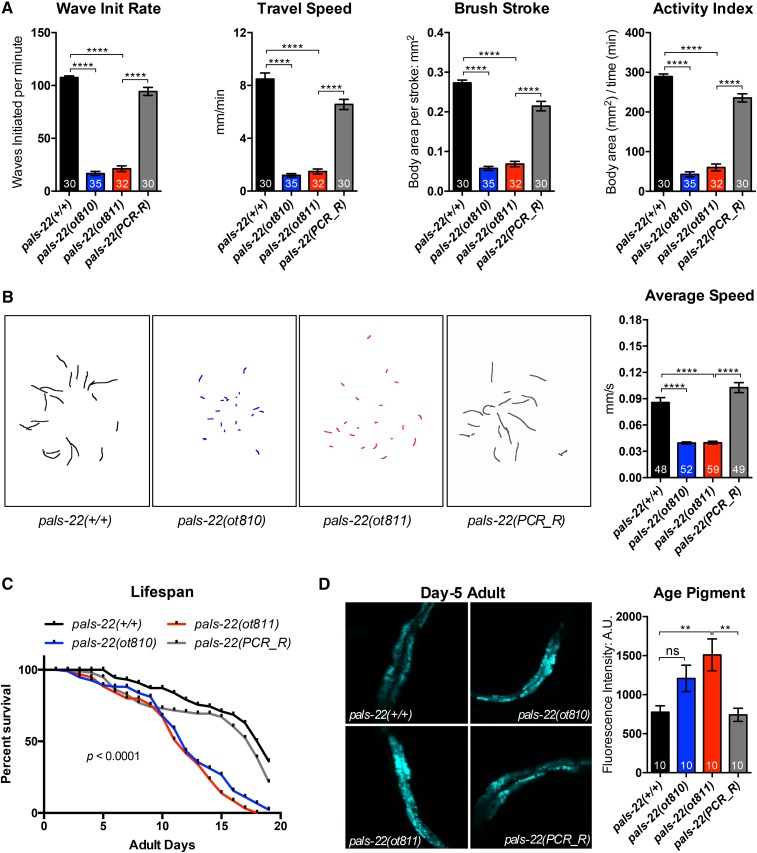Figure 8.
pals-22 mutants show defective locomotion and early onset of aging traits. (A) Day 1 adult pals-22 mutants exhibit defective swimming features, including decreased wave initiation (init) rate, travel speed, brush stroke, and activity index. pals-22(PCR_R) is the pals-22(ot811) mutant carrying a wild-type copy of pals-22 on an extrachromosomal array amplified by PCR. Data shown are mean ± SEM of each parameters, n = 30–35 (number indicated in each bar) from two independent experiments, **** P < 0.0001 (one-way ANOVA) compared to related control. (B) pals-22 mutants crawl slowly on agar plates. The left panel shows the crawling path of each animal in 30 sec. The right panel shows the mean ± SEM of average crawling speed (millimeters per second) for day 1 adults from two independent experiments, n = ∼55 worms for each genotype, **** P < 0.0001 (one-way ANOVA) compared to related control. (C) pals-22 mutants have shorter life spans compared to wild-type or pals-22(PCR_R). Survival study was initiated with 96 worms (for each genotype) at L4 stage (day 0). Data shown is one represented trial of life span; two additional independent trials also show similar changes of life span in pals-22 mutants, P < 0.0001 (Log-rank test), comparing the wild-type to mutants, or comparing pals-22(PCR_R) against pals-22(ot811). (D) pals-22 mutants exhibit early accumulation of age pigment. The left panel shows representative pictures of age pigment (excitation: 364 nm; emission: 380–420 nm). The right panel shows the mean ± SEM of age pigment auto-fluorescence intensity of day 5 adults, n = 10 worms from each genotype, ns (not significant) or ** P < 0.01 (one-way ANOVA) compared to related control. A.U., arbitrary units.

